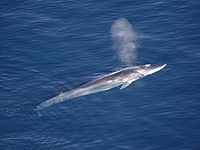
Paralarvae of Octopus vulgaris Type II are stenohaline conformers: relationship to field distribution and dispersal
Sign Up to like & getrecommendations! Published in 2017 at "Hydrobiologia"
DOI: 10.1007/s10750-017-3458-y
Abstract: The degree of euryhalinity of cephalopod planktonic paralarvae potentially affects the dispersal capacity and distributional range of species. Herein, we tested the hypothesis that O. vulgaris Type II paralarvae would show some tolerance to seawater… read more here.
Keywords: type stenohaline; field; vulgaris type; octopus vulgaris ... See more keywords

Digestive enzymes and timing of digestion in Octopus vulgaris type II
Sign Up to like & getrecommendations! Published in 2020 at "Aquaculture Reports"
DOI: 10.1016/j.aqrep.2019.100262
Abstract: Abstract The study of digestive physiology is a crucial aspect enabling commercial aquaculture of Octopus vulgaris type II. Knowing the processes of digestion, absorption, and assimilation of nutrients and factors that modulate the digestive environment… read more here.
Keywords: digestive enzymes; vulgaris type; digestion; octopus vulgaris ... See more keywords

Biomarkers of physiological responses of Octopus vulgaris to different coastal environments in the western Mediterranean Sea.
Sign Up to like & getrecommendations! Published in 2018 at "Marine pollution bulletin"
DOI: 10.1016/j.marpolbul.2018.01.032
Abstract: The increase of pollutants in coastal seawater could produce several harmful biological effects on marine organisms related to the production of reactive oxygen species (ROS) causing cellular and tissue damages through oxidative stress mechanisms. Common… read more here.
Keywords: sea; mediterranean sea; biomarkers physiological; physiological responses ... See more keywords

The waste collector: information from a pilot study on the interaction between the common octopus (Octopus vulgaris, Cuvier, 1797) and marine litter in bottom traps fishing and first evidence of plastic ingestion.
Sign Up to like & getrecommendations! Published in 2021 at "Marine pollution bulletin"
DOI: 10.1016/j.marpolbul.2021.113185
Abstract: Few studies focused on behaviour adaptations of organisms to marine litter (ML) pollution in Mediterranean Sea. This research, investigates on some behavior traits of Octopus vulgaris, focusing on the interaction with ML during the artisanal… read more here.
Keywords: octopus vulgaris; pilot study; interaction; plastic ingestion ... See more keywords

Shotgun Proteomics Analysis of Saliva and Salivary Gland Tissue from the Common Octopus Octopus vulgaris.
Sign Up to like & getrecommendations! Published in 2018 at "Journal of proteome research"
DOI: 10.1021/acs.jproteome.8b00525
Abstract: The salivary apparatus of the common octopus ( Octopus vulgaris) has been the subject of biochemical study for over a century. A combination of bioassays, behavioral studies and molecular analysis on O. vulgaris and related species… read more here.
Keywords: octopus; vulgaris; analysis; common octopus ... See more keywords

Synapsins are expressed at neuronal and non-neuronal locations in Octopus vulgaris
Sign Up to like & getrecommendations! Published in 2019 at "Scientific Reports"
DOI: 10.1038/s41598-019-51899-y
Abstract: Synapsins are a family of phosphoproteins fundamental to the regulation of neurotransmitter release. They are typically neuron-specific, although recent evidence pointed to their expression in non-neuronal cells where they play a role in exocytosis and… read more here.
Keywords: neuronal non; neuronal locations; octopus vulgaris; synapsins expressed ... See more keywords

Phylogeography of the insular populations of common octopus, Octopus vulgaris Cuvier, 1797, in the Atlantic Macaronesia
Sign Up to like & getrecommendations! Published in 2020 at "PLoS ONE"
DOI: 10.1371/journal.pone.0230294
Abstract: Exploited, understudied populations of the common octopus, Octopus vulgaris Cuvier, 1797, occur in the northeastern Atlantic (NEA) throughout Macaronesia, comprising the Azores, Madeira and Canaries, and also the Cabo Verde archipelago. This octopus species, found… read more here.
Keywords: octopus; common octopus; populations common; octopus vulgaris ... See more keywords

Transcriptome-wide selection and validation of a solid set of reference genes for gene expression studies in the cephalopod mollusk Octopus vulgaris
Sign Up to like & getrecommendations! Published in 2023 at "Frontiers in Molecular Neuroscience"
DOI: 10.3389/fnmol.2023.1091305
Abstract: Octopus vulgaris is a cephalopod mollusk and an active marine predator that has been at the center of a number of studies focused on the understanding of neural and biological plasticity. Studies on the machinery… read more here.
Keywords: reference; expression; cephalopod mollusk; reference genes ... See more keywords

You Are What You Eat: A Genomic Analysis of the Gut Microbiome of Captive and Wild Octopus vulgaris Paralarvae and Their Zooplankton Prey
Sign Up to like & getrecommendations! Published in 2017 at "Frontiers in Physiology"
DOI: 10.3389/fphys.2017.00362
Abstract: The common octopus (Octopus vulgaris) is an attractive species for aquaculture, however, several challenges inhibit sustainable commercial production. Little is known about the early paralarval stages in the wild, including diet and intestinal microbiota, which… read more here.
Keywords: zooplankton; diversity; vulgaris; octopus vulgaris ... See more keywords

Time Course of Metabolic Capacities in Paralarvae of the Common Octopus, Octopus vulgaris, in the First Stages of Life. Searching Biomarkers of Nutritional Imbalance
Sign Up to like & getrecommendations! Published in 2017 at "Frontiers in Physiology"
DOI: 10.3389/fphys.2017.00427
Abstract: The culture of the common octopus (Octopus vulgaris) is promising since the species has a relatively short lifecycle, rapid growth, and high food conversion ratios. However, recent attempts at successful paralarvae culture have failed due… read more here.
Keywords: octopus; octopus octopus; common octopus; octopus vulgaris ... See more keywords

Prey Capture, Ingestion, and Digestion Dynamics of Octopus vulgaris Paralarvae Fed Live Zooplankton
Sign Up to like & getrecommendations! Published in 2017 at "Frontiers in Physiology"
DOI: 10.3389/fphys.2017.00573
Abstract: Octopus vulgaris is a species of great interest in research areas such as neurobiology, ethology, and ecology but also a candidate species for aquaculture as a food resource and for alleviating the fishing pressure on… read more here.
Keywords: octopus vulgaris; ingestion; vulgaris paralarvae; prey capture ... See more keywords